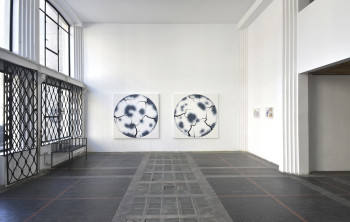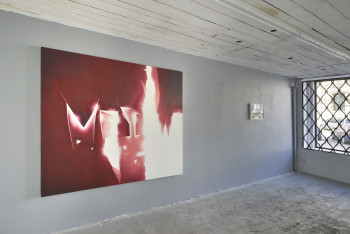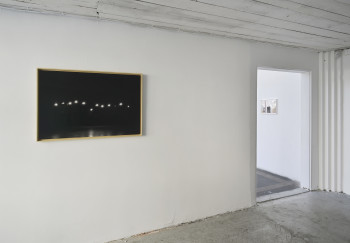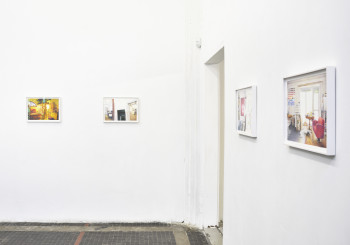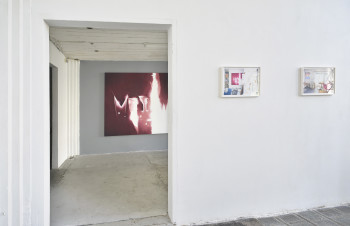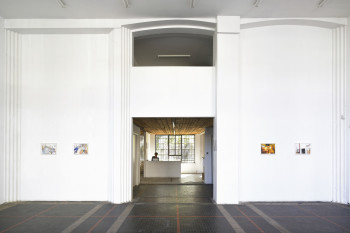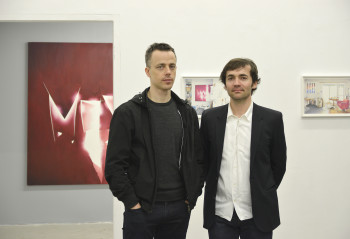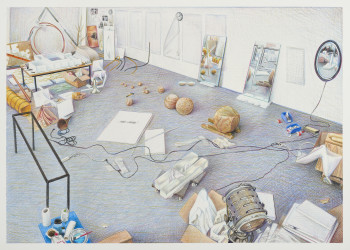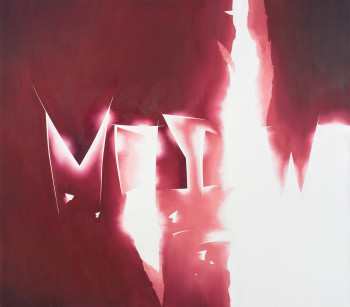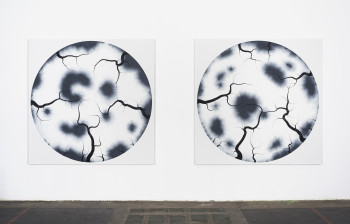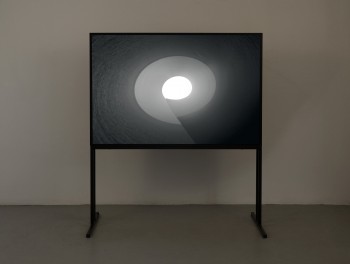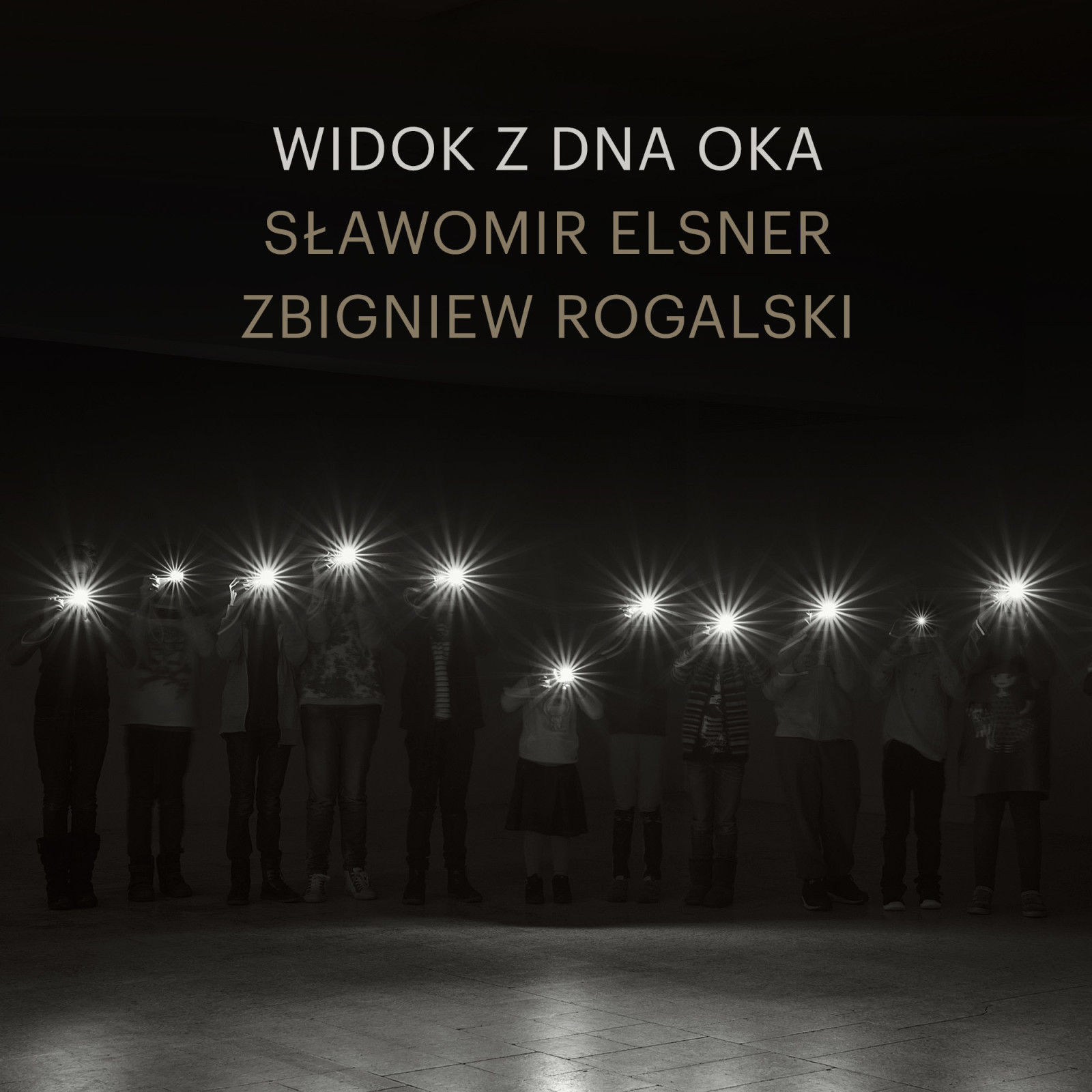
The joint exhibition by Sławomir Elsner and Zbigniew Rogalski reveals images that customarily only artists are privy to – stepping into the interiors of the artist’s studio and across landscapes viewed, in a rather literal sense, through the painter’s eye. Each of these artists is fascinated by the conventions and the ethereal aspects of painting; meanwhile their works also exhibit a spirit of self-reflection on the typicality of the space in which art is created, and on the delusory nature of mankind’s visual apparatus.
Elsner bases his drawings on photographs of studio interiors belonging to fellow artists (Althamer, Bujnowski, Dwurnik, Kulik, Kwade, Maciejowski, Sasnal). The images depict fragments of these spaces, arbitrarily framed, demonstrating more about Elsner than the artist or the space he’s portraying. There’s a note of eerie empathy, a sense of incredulity about the unique character of the artist’s workspace. Elsner’s drawings are devoid of people, depicting the partial interiors, fragments of works and numerous objects that add up to build an intimate sort of setup. We find these places just ‘before’, ‘after’ or ‘on break’ amidst the activity buzzing within, which, in turn, turns up our curiosity, a desire to know more. These details remain private, the artist is not present – there is no room for allegory here, this is a space for work, simply, as further layers of a drawing are patiently applied. The series is crowned with a drawing based on Rogalski’s studio, depicting paintings that are actually on show as part of the current exhibition.
In Rogalski’s earlier works, the studio as a subject, the isolated painting laboratory, is key. In this way, his art probed the relationship between painting and the actual space, along with what happens ‘on the outside’. In time, his attention became increasingly focused on taking painting apart, compiling images and their reflections to achieve the essence of it all – light. This is what builds the narrative of the artist’s most recent works of painting and photography. The gleam of the flash, flames licking at scraps of paper, a light at the end of a tunnel – the blinding effect returns obessively, harmonizing with the remarkable diptych representing the ‘Eye Fundus Landscape’ (2015). The view of dry branches against the sky, referring, in turn, to the earlier series titled ‘Death of a Partisan’ (‘Śmierć partyzanta’, 2005), transformed into a diagnostic image of the eye, which manifests signs of illness. Rogalski touches upon fundamental issues tied with the act of seeing and of creating a work of art, entering, at the same time, into the anatomy of the eye and its metaphysical properties – a landscape painting of a crown of tree branches against the sky is part of this idea. And much like the subtle drawings of art studios by Elsner, Rogalski’s works also reflect an archetypal form of sorts, as well as a study of exhaustion. This is where it all begins and ends – within the eye, within the studio of the artist.

